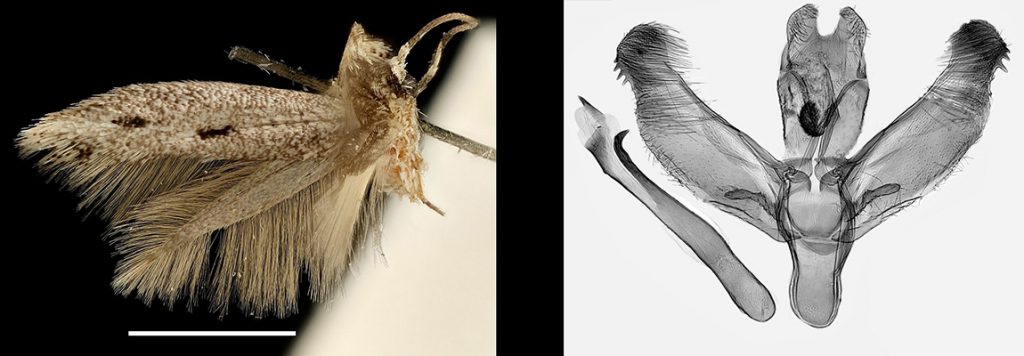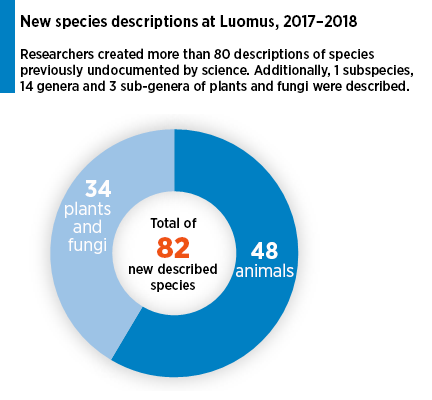Research now
The core of the research conducted at Luomus is focused on the analysis of biodiversity and its evolution. Ornithologists have used the long-term monitoring data of bird populations in their research. In 2017 and 2018, research has further corroborated the findings that our nesting birds are rapidly moving north, driven by climate change. At the same time, some bird species have become much rarer while suffering from both changes in the climate and in agricultural and forestry practices. Our geologists tackled the split of the ancient giant continent Pangea, and the Laboratory of Chronology reconstructed ancient climates.
NEW SPECIES

Of the approximately 9 million species living in the world, less than 2 million are known to science. However, most new species are not uncovered deep in a tropical rainforest, but in the collection archives of museums. This means that new species are not strictly undiscovered. More commonly, new discoveries are made when two groups previously thought to be one species are found to be two separate species. In 2017–2018 Luomus researchers created more than 80 new species descriptions (Table 11) and determined the evolutionary history of several species groups. Additionally, many researchers from outside Luomus made new species descriptions using the Luomus collections.

NEW RESEARCH PROJECTS
Luomus houses a research and education group tasked with the long-term development of research from the standpoint of the whole institute. In 2017–2018, Luomus had several ongoing new research projects, a few of which are listed below.
The Zoology Unit launched a research project funded by the Academy of Finland and led by Senior Curator Lauri Kaila, studying the evolutionary background of the explosive speciation of butterflies. Another new research project is a three-year study funded by the Kone Foundation and led by Researcher Caroline Fukushima and Curator Pedro Cardoso, focusing on the environmental impact of the illegal animal trade. A particular emphasis is on the illegal trafficking of tarantulas and scorpions. The METSO bird of prey project (more in Finnish), led by Curator Jari Valkama and coordinated by Heidi Björklund, studied large birds of prey as indicators of biodiversity in forest environments and offered tools to forest owners and forestry professionals. The project was funded by the Ministry of the Environment and ended in 2018.
The Natural Sciences Unit launched the VALVE (Volatiles and Large Volcanic Eruptions) project, funded by the Academy of Finland and led by Senior Curator Arto Luttinen and Academy Researcher Jussi Heinonen. It studies the geochemistry of flood basalts in the Karoo region. The Natural Resources Institute Finland project QUANOMAL led by Pekka Nöjd of the Institute received funding from the Academy of Finland for an extended term. In the project, Luomus analysed tree-ring series collected from Lapland over the course of thousands of years to discover anomalies that indicate periods during which the growth of the trees has slowed down due to, for example, volcanic eruptions or meteorites. The Life Histories in Teeth project led by Curator Laura Arppe and funded by the Kone Foundation, which aims to find new methods and data archives for use in Finnish isotope archaeology, also received funding for a further term.
The Botany Unit launched a project, led by Professor Jaakko Hyvönen and Curator Xiaolan He and funded by the Academy of Finland, to study genome-level changes associated with acclimatising to a terrestrial environment. A project led by Curator Otto Miettinen, studying the taxonomy and evolution of Basidiomycota in the class Dacrymycetes, continued. A research project led by Professor Jouko Rikkinen, examining the biodiversity of lichen in tropical mountain ecosystems as well as the impact of environmental changes on these symbiotic organisms, also continued. The project is funded by the EU Horizon 2020 programme.